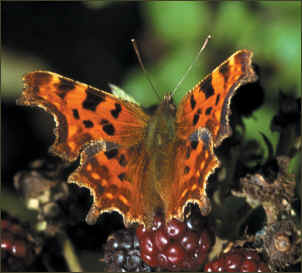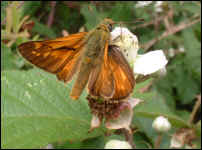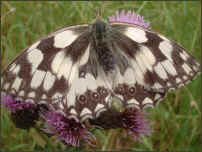
A Comma Butterfly
BUTTERFLY DOSSIER
“How does one tell a Butterfly from a moth? This is often
a question asked about this intriguing family of beautiful insects.
Generally, all butterflies are seen during the day, whilst most moths are active at night. Butterflies tend to have a small
‘club’ at the end of their antennae whilst moths have a more
feathery end. After all that, they are all members of the same family
(the Lepidoptera) and many moths are even more delightfully patterned
than our plainer butterflies.
The life cycle of Moths and Butterflies is a complete
metamorphosis – egg, larva, chrysalis, adult.
For some this process takes a year, for others just a few weeks. The
annual cycle for each species is determined by its over-wintering
strategy. Some endure the season at the egg stage, others stay
underground as larva, many eke out the colder months as a pupa, some
survive winter as fully-grown insects.
Many
caterpillars have specific and sole food-plants, so our flora is
important in determining what types we can find in Cookham. Adult
Butterflies tend to have a wider choice of nectar-bearing plants,
perhaps being less fussy than their fore-bearing caterpillars, but one
or two, such as the Hairstreaks and the Purple Emperor, prefer to sup
on aphid’s honeydew.
An excellent
identification guide to these fascinating creatures is ‘Britain’s
Butterflies” (£15) by David Tomlinson and Rob Still. Ring
01628-526091 for details.
wildlife@cookham.com

|
Large Skipper “The Large Skipper is a common butterfly of summer, often associated with Bramble and Clover”. |
|
|
|
Marbled White – “Seen mainly in July and August, the Marbled White is actually classified as a brown butterfly with white markings!” |
|
|
|
Meadow Brown – “The meadow Brown can sometimes be seen in great profusion on grasses and meadow flowers”. |

